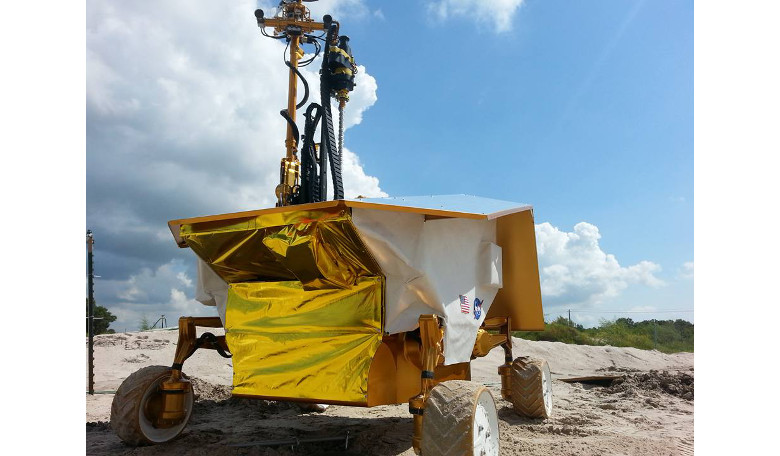NASA have left many in the lunar science community confused and angered after the agency decided to scrap it’s Resource Prospector mission - it’s only planned robotic mission to the Moon’s surface.
The move is seen as somewhat of a puzzlement given the U.S Presidents determined plans to put U.S astronauts back on the Moon, as the rover’s main purpose was to search for volatiles such as hydrogen, oxygen and water - elements that would be essential for any explorers hoping to stay long term in a lunar settlement. These basic components are not only vital consumables, but they could be used to produce rocket fuel for onward journeys to other planets.
After the notification from NASA, the Lunar and Planetary Institute’s Lunar Exploration Analysis Group (LEAG), which supports the agency by providing analysis of scientific, technical, commercial, and operational issues regarding lunar exploration objectives, were quick to issue a letter to newly appointed Administrator Jim Bridenstine to demonstrate their objection to the decision.
The letter indicates that the mission, which was well underway for being launched in the early 2020s, had started to suffer setbacks when it was moved from the Human Exploration and Operations Directorate to the Science Mission Directorate (SMD) within NASA. Due to funding issues and conflicting scheduling and priorities within the SMD, it looks like the Prospector mission drew the short straw and the now cancelled project has been asked to close down by the end of May.
“This action is viewed with both incredulity and dismay by our community, especially as the President’s Space Policy Directive 1 directs NASA to go to the lunar surface," reads the letter from the LEAG. “RP was the only polar lander-rover mission under development by NASA (in fact, by any nation, as all of the international missions to the lunar poles are static landers) and would have been ready for preliminary design review at the beginning of 2019…”
The letter goes on to read; “It is critical that NASA provide strong leadership in documenting that lunar surface return is being actively pursued. Cancellation of the only NASA lunar surface mission currently under development to obtain strategic data from the Moon’s polar regions is not the way to signal that intention. As stated above, RP would be a pathfinder for NASA’s contribution to the space economy, provide the first “ground truth” data for the poles since the LCROSS impact in 2009, be the first US lunar lander since Apollo 17 in 1972, and become be the first ever US robotic rover on the surface of the Moon.”
The idea of returning to the Moon to harvest its resources is not completely dead in the water however, and a recent request for information (RFI) on its new Commercial Lunar Payload Services (CLPS) program suggests NASA is changing its strategy to achieve the same goals, I.e. the agency still wants to go to the Moon, but it doesn’t want to do it alone.
“The contractors shall provide all activities necessary to safely integrate, accommodate, transport, and operate NASA Payloads using contractor provide assets, including launch vehicles, lunar lander spacecraft, lunar surface systems, Earth re-entry vehicles and associated resources,” reads the RFI.
Making a move towards a prominent commercial involvement, which presumably is favoured for budget purposes was also echoed in a recent Tweet by Jim Bridenstine; “We’re committed to lunar exploration @NASA. Resource Prospector instruments will go forward in an expanded lunar surface campaign. More landers. More science. More exploration. More prospectors. More commercial partners.”











